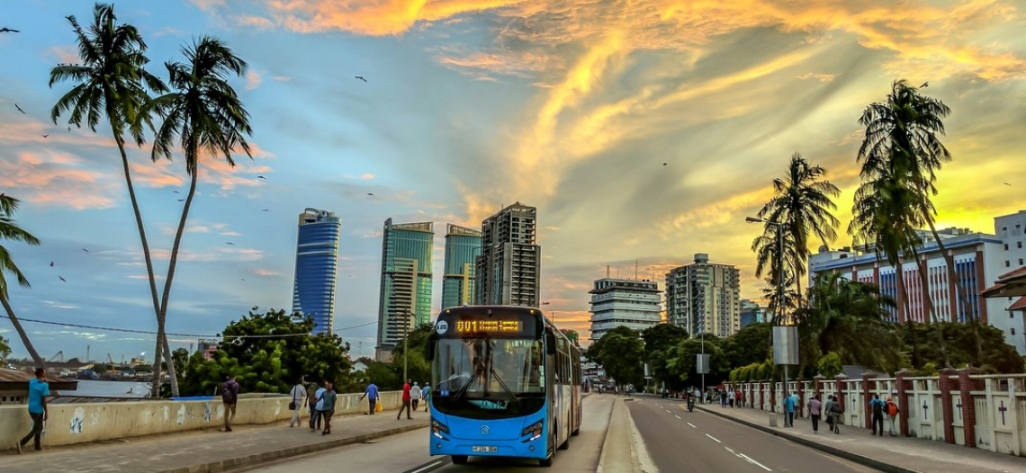Located on the Indian Ocean, Dar es Salaam, Tanzania is a city of five million, is one of the fastest growing cities in the world. It’s a major economic hub in East Africa, and a major port city. It’s the largest city of Tanzania, and was–until 1974–Tanzania’s capital (which moved in 1996 to Dodoma).
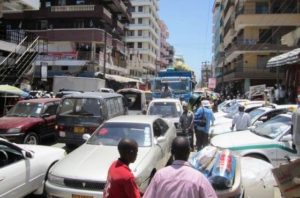
Dar es Salaam traffic. Photo: Wanted In Africa.
The city is the leading arrival and departure point for most tourists who visit tourism areas in Tanzania like the national parks for safaris and the islands of Zanzibar. Dar es Salaam is also the largest and most populous Swahili-speaking city in the world.
But, like so many cities, the heart of the city has long been choked by cars, which endangered both its quality of life and its economic future.
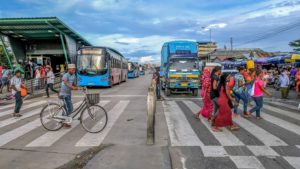 In response, Dar has launched a series of transformative, revitalizing improvements to transit, cycling and walking, the most important of which is the Dar es Salaam Bus Rapid Transit (BRT) system, or DART. These efforts have made it the first African city to win the prestigious Sustainable Transport Award in the award’s 13-year history.
In response, Dar has launched a series of transformative, revitalizing improvements to transit, cycling and walking, the most important of which is the Dar es Salaam Bus Rapid Transit (BRT) system, or DART. These efforts have made it the first African city to win the prestigious Sustainable Transport Award in the award’s 13-year history.
DART is a high-quality, high-capacity BRT system incorporating best practice design and features, is the first true BRT system in East Africa.
“The first phase of the BRT is already proving to be transformational for Dar, both socially and economically,” states Bella Bird, World Bank Country Director for Tanzania, Burundi, Malawi and Somalia. “Increased transit speeds, improved pedestrian access, safe, reliable transit has the potential to significantly enhance urban life here. It is wonderful to see the travel time savings given back to commuters of about 16 days of their life per year, which were previously lost in traffic jams. We look forward to celebrating the achievement of this award with the city”.
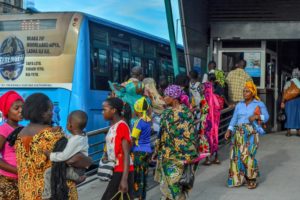 The first phase of the network was supported by the World Bank, and opened May 16, 2016. It spans 21 km of trunk route, and serves 160,000 passengers per day on average with the current fleet of 140 buses.
The first phase of the network was supported by the World Bank, and opened May 16, 2016. It spans 21 km of trunk route, and serves 160,000 passengers per day on average with the current fleet of 140 buses.
By mid-next year (2018), when the first phase becomes fully operational with over 300 buses, the system is projected to carry an estimated 400,000 passengers per day. DART has reduced commute times by more than half for residents, who previously faced upwards of four hours stuck in traffic every day. At stations with passing lanes, some of the existing bus fleet can provide express service to key destinations, saving even more time.
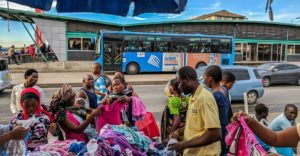 Serving the key axis of Morogoro Road and running through the city center, DART is more than a public transit system, it has brought improvements for pedestrians and cyclists as well.
Serving the key axis of Morogoro Road and running through the city center, DART is more than a public transit system, it has brought improvements for pedestrians and cyclists as well.
The project includes cycle paths, sidewalks, and improved pedestrian safety with well-designed, at-grade pedestrian crossings also complying with universal accessibility principles.
The project is being implemented in six phases, which will cover the entire city with high quality BRT service, and the accompanying cycling and walking infrastructure. DART’s second phase, to be completed over the next year, is supported by the African Development Bank, and the planned third and fourth phases will be supported by the World Bank (P150937).
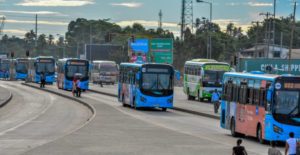 “The Sustainable Transport Award has always been about transformation, the committee is looking to call attention to political courage and regional best practices, especially in places that are often overlooked,” said Michael Kodransky, Chair of the Sustainable Transport Award Committee. “This project is transformative for Dar, and it offers a source of inspiration for other African cities, where new transport systems are being planned. We’re thrilled to promote over the next year the great work that Dar has done, and convene experts from all over the world to see first-hand what they’ve accomplished.”
“The Sustainable Transport Award has always been about transformation, the committee is looking to call attention to political courage and regional best practices, especially in places that are often overlooked,” said Michael Kodransky, Chair of the Sustainable Transport Award Committee. “This project is transformative for Dar, and it offers a source of inspiration for other African cities, where new transport systems are being planned. We’re thrilled to promote over the next year the great work that Dar has done, and convene experts from all over the world to see first-hand what they’ve accomplished.”
Moscow, Russia will receive the honorable mention for an impressive new train line, reorganization of bus transport, and street redesigns to improve conditions for pedestrians and transit users. “Dar has been selected as having the potential to accelerate sustainable transport projects in booming Sub-Saharan Africa, but the work that Moscow has done is likewise incredible, and we plan to continue engaging with them in any way we can,” said Kodransky. “In particular, the committee was impressed by the rail and bus transit expansions as well as street improvements with high quality public spaces.”
Both cities will be honored at an award ceremony in Washington, DC in January 2018 during the Transport Research Board annual meeting.
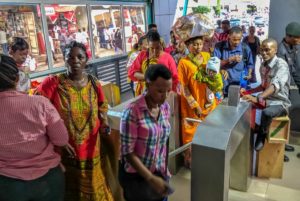 “DART is a great example of the progress being made in the East Africa region, and the success of this system will hopefully inspire replication,” said Arturo Ardila-Gomez, a member of the Sustainable Transport Award Committee, and Global Lead for Urban Mobility & Lead Transport Economist at the World Bank. “The committee is proud to give this well-deserved recognition to Dar, which has taken a big step in improving the quality of life for its citizens.”
“DART is a great example of the progress being made in the East Africa region, and the success of this system will hopefully inspire replication,” said Arturo Ardila-Gomez, a member of the Sustainable Transport Award Committee, and Global Lead for Urban Mobility & Lead Transport Economist at the World Bank. “The committee is proud to give this well-deserved recognition to Dar, which has taken a big step in improving the quality of life for its citizens.”
Dar es Salaam will be the site of MOBILIZE 2018, ITDP’s annual Sustainable Transport Summit organized in partnership with the Volvo Research and Education Foundations. The event will showcase best practices and lessons in sustainable mobility to an international group of city practitioners and researchers, spotlighting this emerging city as a learning lab.
Other STA-winning cities include: Seoul, South Korea; Paris, France; Guangzhou, China; San Francisco, USA; Mexico City, Mexico; and Yichang, China.
Unless otherwise credited, all images courtesy of the City of Dar es Salaam.

